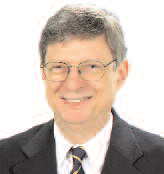Latest News
October 1, 2008
By Jim Romeo
 W. Roger Briley, Ph.D. |
Modeling and simulation is solving some of the most difficult engineering problems in everyday life. In fact, Congress has passed legislation designating modeling and simulation as a National Critical Technology that is a critical path to security and prosperity in the U.S.
The SimCenter, the National Center for Computational Engineering at the Graduate School of Computational Engineering at the University of Tennessee in Chattanooga is following this direction. It has been in existence for more than six years and operates in partnership with its research neighbor, Oak Ridge National Laboratory (ORNL).
According to the SimCenter, its goal “is to produce a new breed of engineer that can help the United States remain competitive in the global marketplace.” It is trying to do this by closing the current engineering talent gap while addressing national issues such as sustainable energy, environment, health care, and defense.
W. Roger Briley, Ph.D., is a professor of computational engineering at the SimCenter and we had an opportunity to speak with him about using desktop technology to fulfill the SimCenter’s mission and solve engineering problems.
Can you give us a brief overview of what the SIM-Center is, and what type of projects it works on?
Briley: The SimCenter is an integrated interdisciplinary research and education center for computational engineering, which is the development and application of computational models and scientific supercomputing to solve complex physical problems arising in engineering analysis and design.
Our broad mission is to establish next-generation technologies and innovative interdisciplinary education in computational modeling, simulation and design, with consequent leadership in critical technology areas affecting defense, sustainable energy, environment, and health care.
Tell us about the software that you use. Is it all developed in-house, or is some off the shelf?
Briley: The SimCenter develops its own scalable, application-reconfigurable simulation software (Tenasi) that supports computational modeling, grid generation, simulation, sensitivity analysis, and design studies. The SimCenter also operates a dedicated TOP500-ranked diskless Linux cluster of in-house design. ]In addition], we also use some commercial software for scientific visualization and grid generation.
What are some of the unique modeling projects that you’ve done with your software?
Briley: We have done a few fluid flow problems that we believe were unique in terms of the level of complexity and fidelity.
These include studies of the vortex ring state associated with a V-22 Osprey tiltrotor aircraft, simulations of control-surface induced maneuvers of a submarine with rotating propulsor, simulations for aerodynamic drag of fully configured tractor-trailer trucks with rotating wheels, and simulations of large-amplitude surface ship motions in incident waves.
Can you talk specifically about the research that the center has conducted for the engineering and design community nationally and globally?
Briley: The SimCenter has a very long history of research contributions in computational fluid dynamics, especially in engineering-application areas of aerodynamics, hydrodynamics and propulsion related to air, sea, land, and space vehicles.
More recently, we have begun significant efforts in computational electromagnetics, fuel cell design, environmental airflows, plasmadynamics, and gas kinetics.
Three-dimensional field simulations are difficult to understand without visualization through imaging and animation of computed data.
Insight into physical flow structures has been especially useful in understanding the complex three-dimensional unsteady flow simulations we have done for tractor-trailer truck aerodynamics, the V-22 Osprey tiltrotor aircraft, and many other simulations.
How does the approach of the SIM Center differ from that used by industry or in R&D centers?
Briley: As an academic institution, our role is different from that of industry; our approach of integrated research and education is nontraditional in its emphasis on interdisciplinary team research on computationally related real-world engineering problems.
The graduate curriculum and student research are integrated with this team research, and students have significant interaction with multiple research and teaching faculty and staff.
Our goals are to support industry through external interactions and partnerships that help focus our research on important problems, provide access to analytical services and computational tools, and by producing graduates who are prepared for interdisciplinary team research in critical technology areas.
How do you view the role of engineering software as a tool for scientific advancement and what trends will engineers see in the future?
Briley: Congress is passing legislation declaring modeling and simulation a National Critical Technology.
We expect that engineering software will have an increasingly dramatic impact on the practice of engineering in the future, as engineers have individual access to more and more powerful computers and software tools.
How much research and development success is dependent on a technology budget?
Briley: The U.S. is now facing stiff competition from abroad by countries that are making large investments in computational engineering for product development now and long into the future.
A recent NSF panel has concluded that computer simulation has become indispensable to the development of many technologies, and that the country that leads in computational engineering and science will inherently lead in numerous other areas of science and technology, and the SimCenter is committed to helping meet this challenge.
More Info:
NationalCenter for Computational Engineering
Chattanooga,TN
utc.edu/NationalSimCenter/
Jim Romeo is a freelance writer specializing in industrial technology. He can be reached at jimromeo.net or by sending an e-mail to [email protected].
Subscribe to our FREE magazine, FREE email newsletters or both!
Latest News
About the Author
Jim Romeo is a freelance writer based in Chesapeake, VA. Send e-mail about this article to [email protected].
Follow DE





